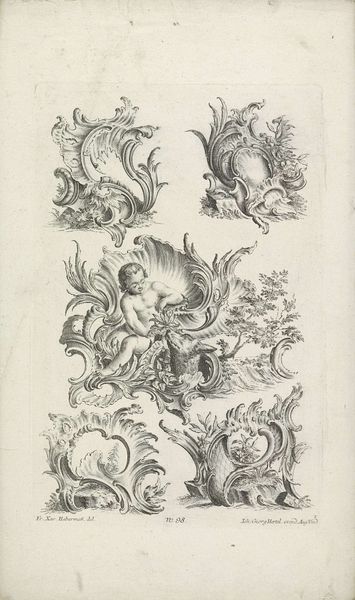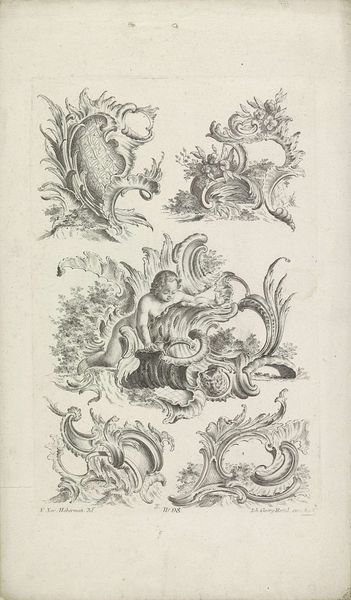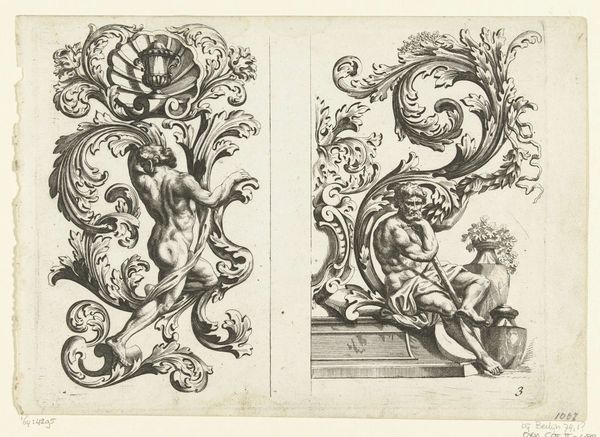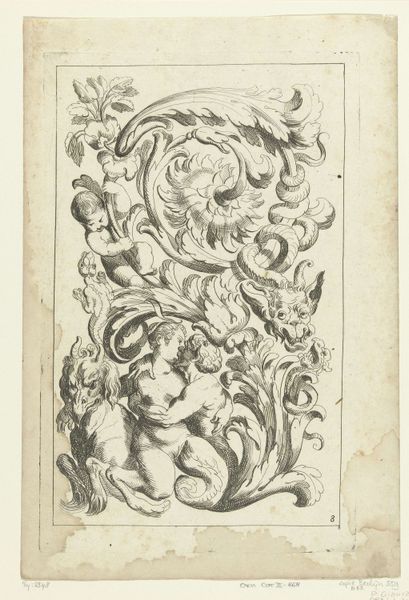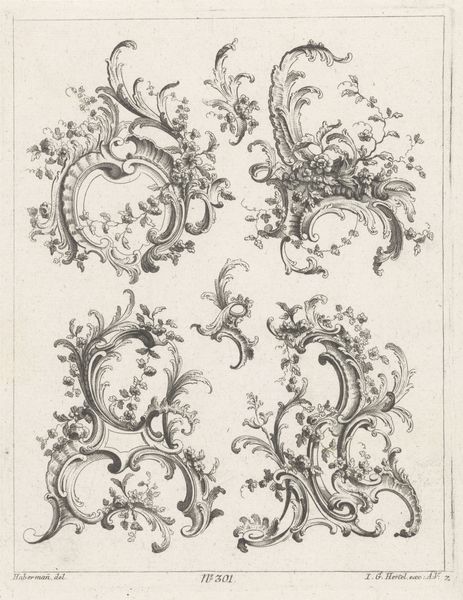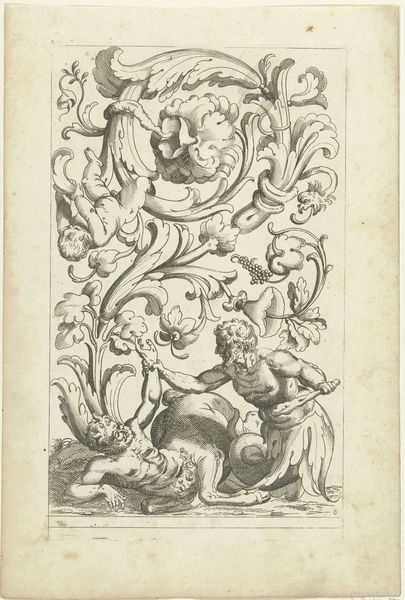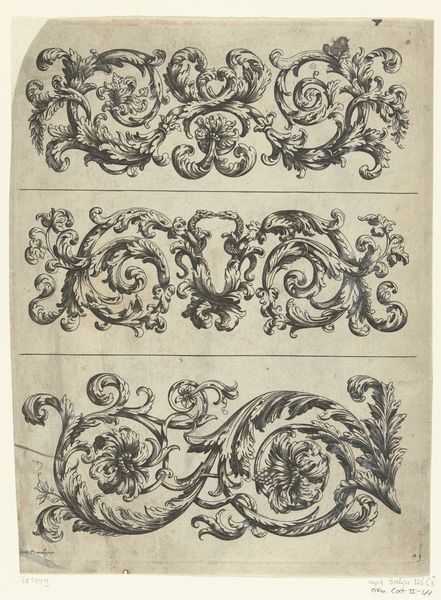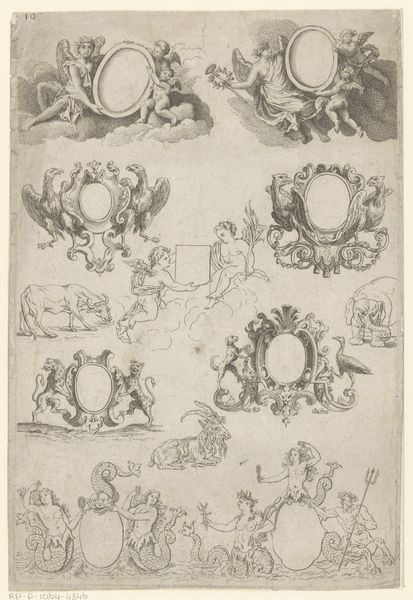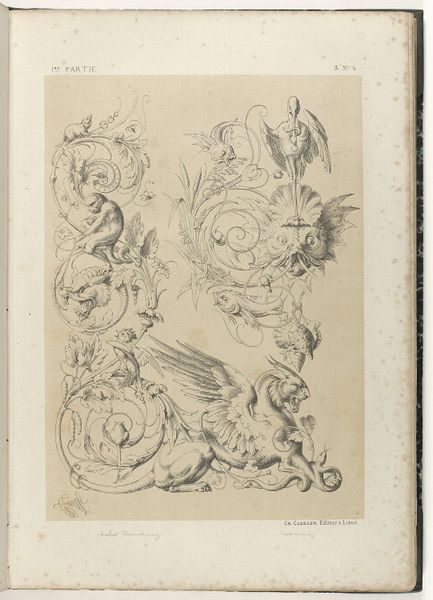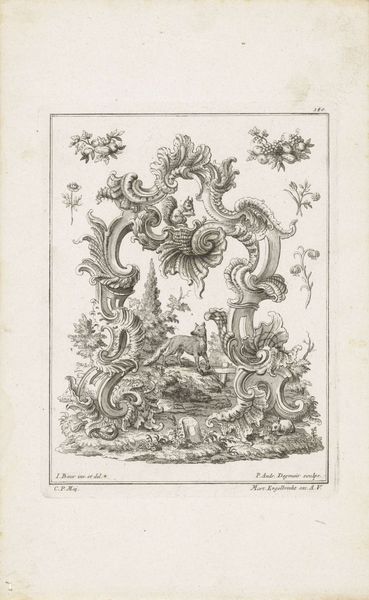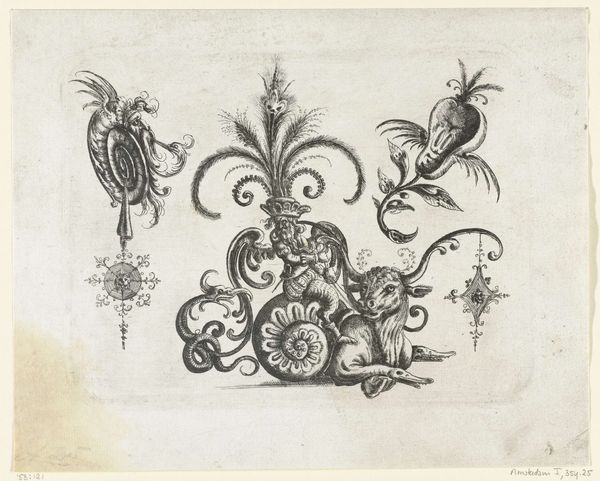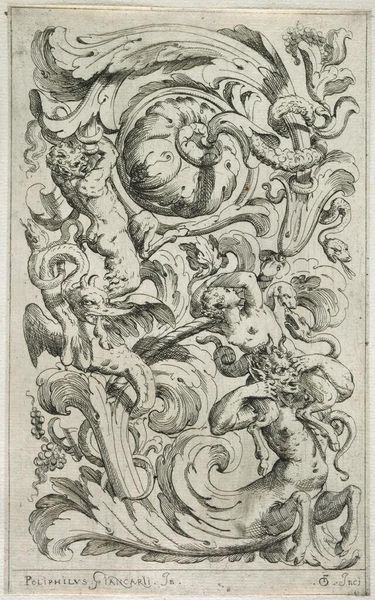
drawing, ink
#
drawing
#
baroque
#
pen sketch
#
figuration
#
ink
#
pen-ink sketch
#
line
#
pen work
#
sketchbook drawing
#
genre-painting
#
rococo
Dimensions: height 298 mm, width 193 mm
Copyright: Rijks Museum: Open Domain
Editor: Here we have Emanuel Eichel’s “Rocailles met putto en adelaar,” or “Rocaille with putto and eagle,” made sometime between 1731 and 1775. It’s an ink drawing featuring multiple ornamental designs. The detail is incredible, but I am struck by how these drawings probably acted as a source for decorative programs during that time. How were drawings like these viewed by the public, and how did they circulate? Curator: That's a perceptive observation. These drawings weren't just artistic expressions; they served a very real social and economic function. In the 18th century, pattern books and individual drawings like these facilitated the spread of artistic ideas and styles. They were vital tools for artisans, architects, and even wealthy patrons planning decorations for their homes. The Rococo style, which is very prominent here with its asymmetry and ornamental curves, became highly fashionable. The dissemination of styles also served as a signifier of status and cultural capital. Editor: So, access to these drawings might have influenced someone's social standing? Curator: Exactly. Consider that the Baroque and Rococo styles were often associated with aristocratic patronage and power. Owning objects or decorating spaces inspired by these drawings was a way of signaling one's alignment with that elite world. The *putto*, for example, speaks to classicism and established iconography that was deemed appropriate by institutions such as the church and monarchies. These weren't passive images but active agents in a complex social game. What strikes you most about the putto figure itself? Editor: Well, the putto seems almost weightless, playful, not really grounded in reality... Did this whimsical approach challenge earlier, more severe artistic styles? Curator: Yes, and that’s key to understanding its appeal. Rococo, in many ways, was a reaction against the grandeur and solemnity of the earlier Baroque. It favored lightness, elegance, and a certain level of playfulness, reflecting the changing social values and the rise of a more pleasure-seeking aristocracy. I'd say these sketches encapsulate this shift beautifully. Editor: I never thought about how an art piece, even a preparatory sketch, could play such an active role in shaping social dynamics. Thank you, this was a very insightful discussion! Curator: My pleasure. It’s important to remember that art exists not in a vacuum, but within a specific social and historical context. Exploring that relationship can reveal so much about both the art and the society that created it.
Comments
No comments
Be the first to comment and join the conversation on the ultimate creative platform.

